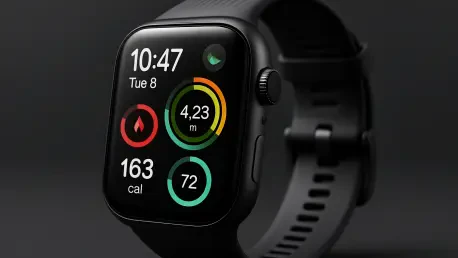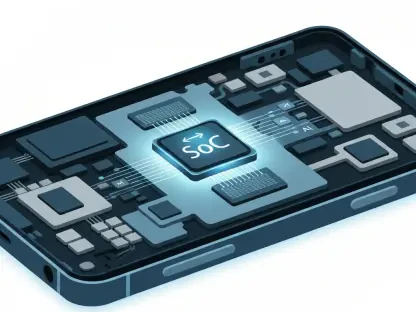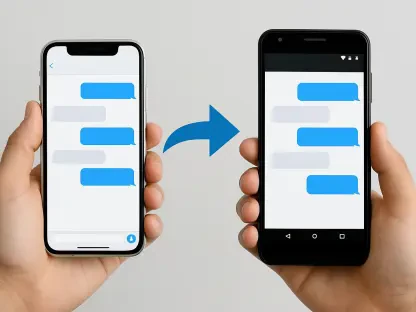In a world where technology seamlessly integrates into daily life, the wearable market in 2025 stands as a testament to innovation, offering devices that cater to every imaginable need and preference, from tracking vital health metrics to delivering smart notifications right on the wrist. Smartwatches and fitness trackers have become indispensable tools for millions. With the holiday shopping season approaching and major sales events like Black Friday on the horizon, now is an opportune moment to explore the standout devices shaping the industry. This guide dives deep into the latest offerings, breaking down the features, designs, and value propositions that define the best wearables available today. Whether the goal is to enhance fitness routines, stay connected, or simply find a budget-friendly option, the array of choices ensures something for everyone.
The rapid evolution of wearable tech has blurred the lines between traditional smartwatches and dedicated fitness trackers, with many devices now combining advanced health monitoring with smart functionalities. Compatibility with smartphone ecosystems plays a pivotal role, often unlocking exclusive features or smoother integration when paired with the right device. Battery life, durability, and design also weigh heavily in consumer decisions, alongside the growing influence of AI for personalized insights. From premium models boasting cutting-edge specs to rugged builds for outdoor enthusiasts, the diversity in form and function reflects a market attuned to varied lifestyles. This exploration aims to simplify the selection process by highlighting key trends and top performers across multiple categories.
Premium Smartwatches: The Best of the Best
Apple Watch Ultra 3 – The Ultimate Overall Pick
The Apple Watch Ultra 3 emerges as the pinnacle of smartwatch technology, setting an unmatched standard with its robust titanium construction and a breathtaking 1.98-inch Retina LTPO3 OLED display that reaches up to 3,000 nits of brightness. Powered by the advanced S10 chip, it offers seamless navigation and an extensive feature set, including blood pressure monitoring and two-way satellite communication for emergencies. Its battery life stretches to an impressive 42 hours, or 72 hours in low-power mode, with a fast-charging capability that hits 85% in just 45 minutes. Designed for versatility, its water resistance up to 100 meters makes it a perfect companion for divers and athletes alike. However, the steep price tag and exclusivity to iOS users mean it’s tailored specifically for those invested in the Apple ecosystem, potentially alienating a broader audience seeking cross-platform compatibility.
Beyond its technical prowess, the Apple Watch Ultra 3 excels in delivering a holistic user experience tailored for active lifestyles and health-conscious individuals. Its comprehensive health tracking includes ECG monitoring, sleep analysis, and automatic workout detection, ensuring users receive detailed insights into their well-being. The rugged design withstands harsh conditions, making it suitable for everything from urban commutes to wilderness treks. Integration with other Apple devices enhances functionality, allowing seamless control of music, calls, and apps directly from the wrist. Despite these strengths, the cost remains a significant barrier for many, and the lack of Android support limits its reach. For iPhone users willing to invest, though, it represents the gold standard in wearable tech, blending style with substance in a way few competitors can match.
Samsung Galaxy Watch 8 – Android’s Top Contender
For Android users seeking a premium smartwatch, the Samsung Galaxy Watch 8 stands out with its elegant design and a vibrant 1.47-inch Super AMOLED display, which also peaks at 3,000 nits of brightness and is protected by durable sapphire crystal. Running on Wear OS 6 with One UI 8 Watch, powered by the Exynos W1000 processor, it ensures smooth performance across a range of tasks, from notifications to fitness tracking. Galaxy AI integration adds a layer of personalization with features like sleep coaching and energy scores, making it a smart companion for daily life. Its battery life of up to 46 hours without the Always-On Display is commendable, though heavy usage can reduce this duration. Its broad compatibility with Android devices, not just Samsung models, positions it as a versatile choice for a wide user base.
While the Samsung Galaxy Watch 8 impresses with its technical capabilities, it also prioritizes comfort and wearability, fitting snugly on the wrist for all-day use. Advanced sleep tracking stands out as a key feature, providing detailed reports to help users improve rest quality, which is a boon for health-focused individuals. The design strikes a balance between sophistication and practicality, appealing to both casual users and tech enthusiasts. However, some may find the notification visibility lacking due to subtle haptics or display angles, which is a minor drawback in an otherwise polished package. For Android users looking for a smartwatch that rivals top-tier competitors without being tied to a single brand ecosystem, this device offers a compelling mix of innovation and accessibility, ensuring it meets diverse needs with ease.
Specialized Smartwatches: Tailored to Your Needs
Google Pixel Watch 4 – Perfect for Pixel Users
The Google Pixel Watch 4 is a standout choice for those embedded in the Pixel smartphone ecosystem, delivering tailored features like Smart Replies (when paired with Pixel 8 Pro or later) and Gemini’s Raise to Talk functionality for hands-free interaction. Available in 41mm and 45mm sizes, its LTPO AMOLED display matches competitors with 3,000 nits of brightness and is shielded by Corning Gorilla Glass 5 for durability. The Snapdragon W5 Gen 2 processor powers a fluid Wear OS 6 experience, while battery life reaches up to 40 hours on the larger model, supported by faster charging that achieves 100% in 45-60 minutes. Improved haptics enhance usability, though the absence of wireless charging and a relatively high starting price may deter some potential buyers.
A unique aspect of the Google Pixel Watch 4 is its focus on serviceability, allowing component replacements, a rarity among premium smartwatches that often prioritize sealed designs. This commitment to repairability appeals to environmentally conscious consumers or those who value long-term device sustainability. Beyond hardware, its deep integration with Google services offers a cohesive experience, from calendar syncing to voice-activated commands, making it an extension of the Pixel phone rather than just an accessory. While it performs admirably with other Android devices, the full spectrum of features truly shines with Pixel hardware, creating a seamless user journey. For those within this ecosystem, it’s a refined choice, though the cost and charging limitations warrant careful consideration before purchase.
Amazfit Active 2 – Best Budget Option
Priced at just $99.99, the Amazfit Active 2 redefines affordability in the smartwatch arena, proving that a low cost doesn’t equate to low quality. Its 1.3-inch AMOLED display, boasting 2,000 nits of brightness, ensures clear visibility even in sunlight, while a battery life of up to 10 days minimizes the need for frequent charging. Running on Zepp OS 5, it supports over 160 workout modes, alongside sleep tracking and heart health monitoring via the BioTracker sensor. While it lacks advanced features like NFC in the base model and offers only two years of software updates, its build quality and extensive customization options, such as varied watch faces, make it a standout for budget-conscious buyers.
The appeal of the Amazfit Active 2 lies in its focus on delivering core functionalities without unnecessary frills, catering to users who need reliable basics over cutting-edge tech. Its lightweight design ensures comfort for all-day wear, whether at the gym or during daily errands, and the intuitive interface simplifies navigation for tech novices. Fitness tracking remains robust for the price, providing actionable data on steps, calories, and heart rate, though it misses out on more sophisticated metrics like ECG found in pricier models. For students, casual users, or anyone hesitant to invest heavily in a wearable, this device offers exceptional value, balancing performance with cost in a way that broadens access to smartwatch technology without compromising on essential features.
Rugged and Fitness-Focused Wearables
Garmin Fenix 8 Solar – Unmatched Durability for Adventurers
For outdoor enthusiasts and adventurers, the Garmin Fenix 8 Solar sets the benchmark for rugged smartwatches, built to endure the harshest conditions with a titanium case and a scratch-resistant sapphire display. Its 1.4-inch transflective display is optimized for sunlight readability, a critical feature for use in bright outdoor environments, and the solar charging capability extends its battery life to an astonishing 48 days in smartwatch mode—far surpassing most competitors. Equipped with superior GPS accuracy, an LED flashlight, and training tools like Garmin Coach and Endurance Score, it’s tailored for hikers, campers, and endurance athletes. However, its large 51mm size and high price point may not appeal to casual users or those seeking a more discreet wearable.
Beyond its physical toughness, the Garmin Fenix 8 Solar offers a depth of functionality that makes it indispensable for serious outdoor pursuits. Features like topographic maps, weather updates, and multi-band GPS ensure users stay on course, even in remote areas with no cellular coverage. Its health tracking capabilities, including heart rate variability and recovery time analysis, provide valuable feedback for optimizing performance during intense activities. While the size and cost could be prohibitive for some, the trade-off is a device that rarely needs charging and withstands extreme wear and tear, from mountain trails to deep-water dives. For those whose lifestyles demand durability above all else, this smartwatch delivers reliability and precision that justify the investment.
RingConn Gen 2 Air – Minimalistic Fitness Tracking
Breaking away from traditional wrist-worn devices, the RingConn Gen 2 Air introduces a novel approach to fitness tracking with its smart ring design, priced at an accessible $199. This lightweight wearable focuses on essential health metrics such as sleep stages, heart rate, and stress levels, housed in a subtle form factor that prioritizes comfort for continuous wear. Its 22mAh battery lasts up to 10 days, a significant advantage for users tired of daily charging routines, and its IP68/ATM 10 rating ensures durability for swimming and everyday activities. Lacking a display, it syncs effortlessly with Apple Health and Google Fit, though it misses advanced features like sleep apnea monitoring, which are reserved for the pricier Gen 2 model.
The RingConn Gen 2 Air caters to a niche audience seeking minimalism without sacrificing data insights, offering a refreshing alternative for those who find smartwatches bulky or intrusive, especially during sleep. Its design eliminates the distraction of notifications or screens, focusing purely on passive tracking, which can be reviewed later via a smartphone app. The absence of a subscription fee and the inclusion of AI-powered health suggestions add value, making it a cost-effective choice for basic fitness needs. While it won’t replace the multifunctionality of a full smartwatch, its unobtrusive nature appeals to users prioritizing comfort and simplicity, particularly for overnight monitoring. For anyone exploring non-traditional wearables, this smart ring presents a compelling balance of form and function.
Market Trends and Consumer Insights
Wearable Tech Evolution: Blurring Categories
The wearable technology landscape in 2025 showcases a remarkable convergence of smartwatch and fitness tracker functionalities, creating hybrid devices that cater to a broad spectrum of user demands. Many modern wearables now integrate heart rate monitoring, sleep analysis, and workout detection alongside smart features like notifications and app control, diminishing the distinction between categories. This trend reflects a consumer desire for all-in-one solutions that eliminate the need for multiple gadgets. Premium models, in particular, have embraced this shift, embedding advanced health tools with AI-driven personalization, ensuring users receive tailored feedback without sacrificing connectivity. This evolution challenges buyers to focus on specific priorities, whether smart capabilities or fitness depth, when selecting a device.
Another dimension of this category blur is the increasing sophistication of budget options, which now often include features once exclusive to high-end models, such as AMOLED displays and multi-sport tracking. This democratization of technology broadens market access, allowing more consumers to benefit from wearable innovations without hefty investments. Compatibility with smartphone ecosystems further complicates choices, as seamless integration often depends on matching brands or operating systems, a factor that can enhance or limit a device’s potential. As the lines between smartwatches and trackers continue to fade, the industry appears poised to prioritize versatility, pushing manufacturers to innovate in ways that address both casual and specialized needs with equal finesse.
Future Considerations: AI and Form Factor Diversity
Artificial intelligence stands as a transformative force in the wearable sector, with premium devices increasingly leveraging AI to offer personalized coaching, health insights, and predictive analytics that adapt to individual patterns. This technology, evident in models with features like sleep coaching and energy scoring, transforms wearables into proactive wellness tools rather than mere data collectors. As AI capabilities expand, expect future iterations to refine these insights further, potentially integrating with broader health platforms for a more holistic approach to well-being. Consumers should anticipate this trend when investing in devices, as AI-driven features could significantly enhance long-term value, especially for those focused on fitness optimization or chronic condition management.
Parallel to AI advancements, the diversity in wearable form factors signals a shift toward user-centric design, accommodating varied preferences for comfort and aesthetics. Beyond traditional wrist devices, alternatives like smart rings highlight a growing demand for unobtrusive options that blend into daily life without the bulk of a watch. This variety empowers users to choose based on lifestyle—whether a rugged smartwatch for outdoor challenges or a subtle ring for discreet tracking. Looking ahead, manufacturers will likely explore even more innovative designs, from smart clothing to embedded tech, further personalizing the wearable experience. For now, buyers are encouraged to weigh form against function, ensuring their chosen device aligns with both practical needs and personal style.
Final Reflections: Navigating Your Wearable Journey
Choosing with Confidence
Reflecting on the vibrant wearable market of 2025, the array of smartwatches and fitness trackers showcased remarkable strides in technology, from extended battery lives to groundbreaking AI integrations. Each device highlighted in this exploration carved out a niche, addressing specific user needs with precision—be it the unparalleled performance of premium models, the tailored experiences for specific ecosystems, or the rugged reliability for extreme conditions. The diversity in pricing and form factors ensured that accessibility remained a cornerstone, allowing individuals across economic brackets to embrace wearable tech. This competitive landscape underscored a maturing industry, one that has successfully balanced innovation with practicality to meet consumer expectations.
Next Steps for Smart Purchases
Moving forward, consumers are encouraged to pinpoint their primary needs—whether health tracking, smart connectivity, durability, or budget constraints—before committing to a purchase. Timing acquisitions around major sales events could yield significant savings, maximizing value on high-end devices that stand out for their feature sets. Exploring compatibility with existing tech ecosystems will ensure seamless integration, unlocking the full potential of chosen wearables. Additionally, keeping an eye on emerging trends like AI enhancements and novel designs might guide decisions toward future-proof options. By aligning selections with lifestyle demands and staying informed about market developments, buyers can confidently invest in tools that enhance daily routines and long-term wellness goals.









